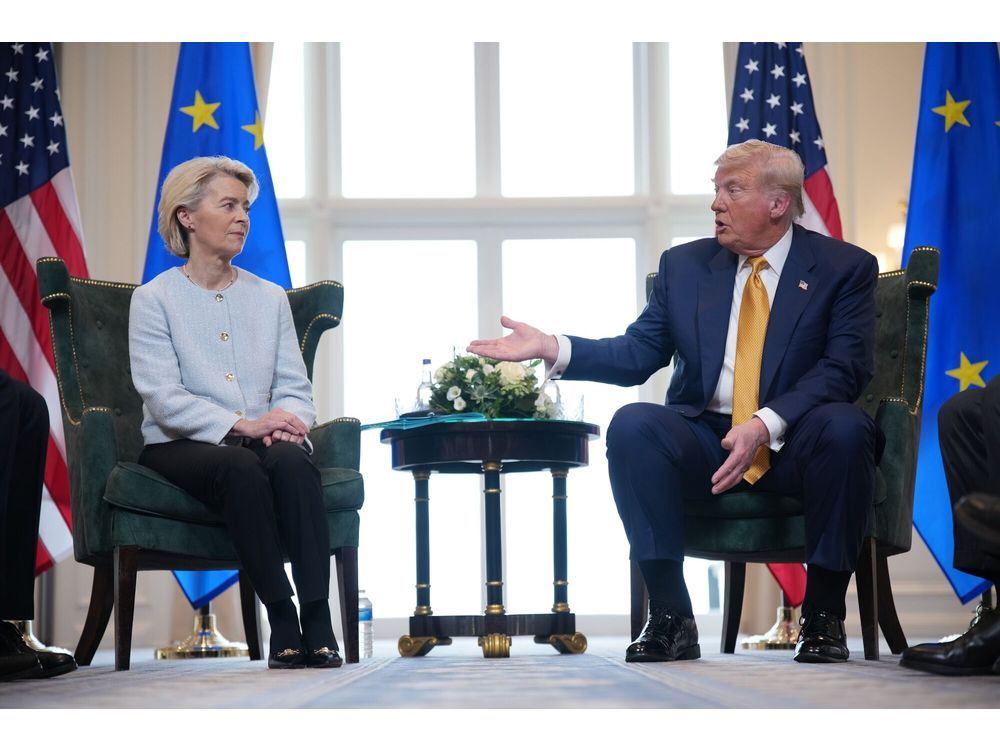President Donald Trump’s flurry of trade deal announcements are so far proving light on detail — with key aspects still under negotiation, partners giving mixed signals about what they signed up for, and big numbers shrinking under scrutiny.
Why it matters
- President Trump's recent trade deal announcements highlight significant gaps in details, which could affect their implementation.
- Mixed reactions from partner nations raise concerns about the reliability of these agreements.
- As scrutiny increases, initial optimistic projections regarding economic benefits are being called into question.
In a series of recent announcements, President Donald Trump has touted new trade agreements as pivotal steps toward revitalizing the U.S. economy. However, a closer examination reveals that many of these deals lack substantial details and are still very much in the negotiation phase. As the administration celebrates these agreements, key questions remain about their actual impact and the commitments made by trading partners.
Despite the grand claims of boosting economic growth and creating jobs, many aspects of these trade deals are still under discussion. This uncertainty raises concerns not only about the feasibility of these agreements but also about the potential backlash from both domestic and international stakeholders. The lack of clarity surrounding the commitments made by partner countries has led to a mixed reception, with various nations expressing differing interpretations of what they have agreed to.
Critically, the optimistic figures initially presented by the Trump administration are beginning to diminish under scrutiny. Early projections suggested significant economic gains; however, as details emerge, those numbers appear increasingly inflated. Economic analysts and trade experts are warning that the lack of concrete information could lead to a misalignment between expectations and actual outcomes, which could have severe implications for U.S. businesses and the economy as a whole.
For instance, while the administration has emphasized the importance of increasing exports, the absence of clear terms regarding tariffs, quotas, and other trade barriers raises questions about how these goals will be achieved. Additionally, the dynamic nature of negotiations means that agreements could evolve or even unravel, leaving U.S. industries in a state of uncertainty.
The mixed signals from partner countries further complicate the situation. Some nations have indicated that they are on board with the proposed agreements, while others have expressed hesitation or outright disagreement with certain terms. This dissonance not only undermines the credibility of the announcements but also puts pressure on U.S. negotiators to clarify positions and ensure that all parties are aligned.
As the Trump administration navigates these complex trade waters, the challenge will be to translate high-level agreements into actionable policies. Analysts argue that without specific commitments and a clear framework for enforcement, these trade deals may fall short of their intended goals. The potential economic benefits could dissipate if partner countries do not follow through on their promises or if unforeseen barriers arise.
Furthermore, the impact of these agreements on domestic industries cannot be overlooked. Many U.S. companies rely heavily on stable trade relationships and predictable tariffs. Any instability or ambiguity could disrupt supply chains, increase costs, and ultimately affect the competitiveness of American businesses in the global market. As companies prepare for the future, they will need to account for the uncertainties introduced by these evolving trade agreements.
In summary, President Trump's trade deal announcements have sparked hope for revitalization in U.S. trade relations, but the reality is far more complex. As negotiations continue and details remain scant, both domestic industries and international partners are left to grapple with an unclear path forward. The long-term success of these agreements will depend on the administration's ability to solidify terms and foster a sense of trust among trading partners.
As the situation develops, stakeholders across the board will be watching closely for any signs of progress or clarification. The future of U.S. trade policy hinges on how effectively these deals can be transformed from lofty promises into concrete action that benefits not just the economy, but the American workforce as well.











